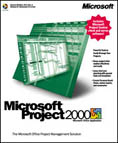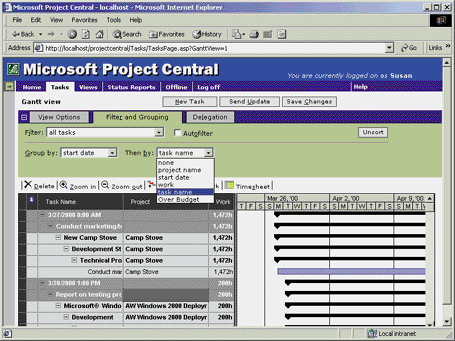
 |

|
| ActiveWin: Reviews | Active Network | New Reviews | Old Reviews | Interviews |Mailing List | Forums |
|
|
|
|
|
DirectX |
|
ActiveMac |
|
Downloads |
|
Forums |
|
Interviews |
|
News |
|
MS Games & Hardware |
|
Reviews |
|
Support Center |
|
Windows 2000 |
|
Windows Me |
|
Windows Server 2003 |
|
Windows Vista |
|
Windows XP |
|
|
|
|
|
|
|
News Centers |
|
Windows/Microsoft |
|
DVD |
|
Apple/Mac |
|
Xbox |
|
News Search |
|
|
|
|
|
|
|
ActiveXBox |
|
Xbox News |
|
Box Shots |
|
Inside The Xbox |
|
Released Titles |
|
Announced Titles |
|
Screenshots/Videos |
|
History Of The Xbox |
|
Links |
|
Forum |
|
FAQ |
|
|
|
|
|
|
|
Windows XP |
|
Introduction |
|
System Requirements |
|
Home Features |
|
Pro Features |
|
Upgrade Checklists |
|
History |
|
FAQ |
|
Links |
|
TopTechTips |
|
|
|
|
|
|
|
FAQ's |
|
Windows Vista |
|
Windows 98/98 SE |
|
Windows 2000 |
|
Windows Me |
|
Windows Server 2002 |
|
Windows "Whistler" XP |
|
Windows CE |
|
Internet Explorer 6 |
|
Internet Explorer 5 |
|
Xbox |
|
Xbox 360 |
|
DirectX |
|
DVD's |
|
|
|
|
|
|
|
TopTechTips |
|
Registry Tips |
|
Windows 95/98 |
|
Windows 2000 |
|
Internet Explorer 5 |
|
Program Tips |
|
Easter Eggs |
|
Hardware |
|
DVD |
|
|
|
|
|
|
|
ActiveDVD |
|
DVD News |
|
DVD Forum |
|
Glossary |
|
Tips |
|
Articles |
|
Reviews |
|
News Archive |
|
Links |
|
Drivers |
|
|
|
|
|
|
|
Latest Reviews |
|
Xbox/Games |
|
Fallout 3 |
|
|
|
Applications |
|
Windows Server 2008 R2 |
|
Windows 7 |
|
|
|
Hardware |
|
iPod Touch 32GB |
|
|
|
|
|
|
|
Latest Interviews |
|
Steve Ballmer |
|
Jim Allchin |
|
|
|
|
|
|
|
Site News/Info |
|
About This Site |
|
Affiliates |
|
Contact Us |
|
Default Home Page |
|
Link To Us |
|
Links |
|
News Archive |
|
Site Search |
|
Awards |
|
|
|
|
|
|
|
Credits |
 |
Product:
Project 2000
Company: Microsoft
Website: http://www.microsoft.com
Estimated Street Price: $499.00
Review By: Julien JAY
Setup
|
Table Of Contents |
Microsoft Project 2000,
which is a member of the Microsoft Office 2000 family, and a certified
Windows 2000 compliant program comes with a Windows Installer based setup
that looks exactly the same as the one of Microsoft Office 2000. So
administrators wonít be disrupted. After you have inserted the CD-Rom
and click the Install Project 2000 button of the autoplay interface
youíll have to type the too long CD-Key and accept the license agreement
terms. Then you can choose which kind of setup you want to run: complete
or custom. If you choose a custom Microsoft Project 2000 setup youíll
have to choose the components you want to install in a list and the setup
will install the full software in almost 10 minutes. Once itís finished
youíre invited to reboot your computer in order for the changes to take
effect. Then the setup will be finalized and youíll be ready to start
managing projects. If when you use Microsoft Project 2000 you call a
feature that wasnít installed due to the on demand setup Microsoft
Project 2000 will offer you to install the specific feature in a minute
without leaving Project! A great feature to save time!
Advanced Setup
To use the Microsoft Project Central companion youíll have to install it using the appropriate autoplay interface button under a Windows NT Server with Microsoft Internet Information Server and Microsoft Internet Explorer installed. Note that Microsoft Project 2000 now supports Windows Terminal Server. Installing Project Central is more than easy and in only a minute youíre done, in fact it seems that Microsoft did a great job to mask the complexity of this tools for the user and the system administrator.
Project Central
One of the major new features of this release is the new applet named Microsoft Project Central that will second Microsoft Project 2000. This new companion is a great addition to the software and clearly shows the undeniable contribution of the Internet in the project management software. It will grant through the web an access to the project to everyone (even for users that donít have Microsoft Project 2000 installed on their desktops) in order to view data in real time, share information, etc. Remote team members need to have at least Microsoft Internet Explorer 4.xx or greater to access Microsoft Project Central (an API extension is available for other web browsers). With this tool every member of your team will be able to plan interactively the tasks that will have to be accomplished for the current project. Members of the team can view their tasks graphically in the Gantt Chart View that will show tasks and timelines. This view can be fully and easily customizable by modifying the columns by sorting, by filtering tasks, by sorting them by their beginning date or their miscellaneous characteristics or by regrouping them by project name. Best of all this view can be modified to include the task list of Microsoft Outlook. Obviously the Microsoft Project Central administrator will grant users several levels of access and depending on this, users may create new tasks, assign tasks to others due to the delegation mode and more. If the administrator wants to keep total control on the project, new tasks suggested by team members will be submitted to his approval and then added to the project. Nonworking or nonproject times (like vacation, sick leave, etc.) are available to be reported by team members to the manager. The administration module also provides administrators with control over formatting styles, views, and security to help them a good organization in the project structure. Alert can also be created so Project Central may alert instantly the team members when for example a task is behind schedule.

Microsoft Project Central in
use
Youíll surely wonder how Project Central works? In fact the chief manager of the project has to use Microsoft Project 2000 to define tasks, etc. and upload it to Microsoft Project Central that will store the information into a database (Microsoft Database Engine, Microsoft SQL Server, Oracle). On the road users have traditionally restricted Internet access so they canít stay connected on the Project Central website as long as theyíre working on the project. Microsoft included offline capabilities so users can take their timesheets and status reports offline to continue working on them. Users can create custom status reports and they can even request updated status: all this updates will be automatically saved in a group report for Microsoft Project Central. Finally team members can track and report hours spent on various assigned tasks, but they can also estimate what percentage of the task is complete when counting hours isnít easy or unnecessary.
| <-- Introduction | First Start & Features --> |


